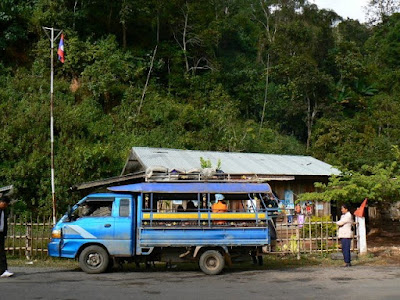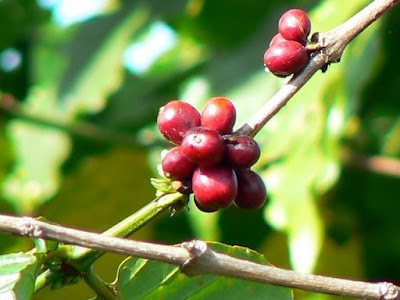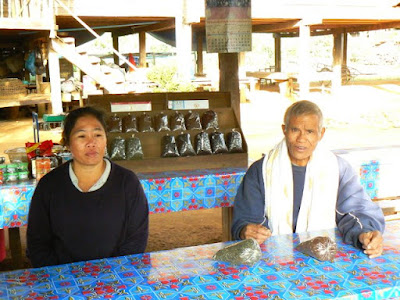
Pakmong a major road junction north of Luang Prabang. Go left to Udomxai and China, go right to Nong Kheaw, Sam Nua and Vietnam. Rain.
I caught the Bus to Luang Namtha again, this time jumping on in Vang Vien and getting off in Luang Namtha only to catch the morning sawnthaew over to Muang Long. The ride ended up being about 27 hours overall, 31 hours door to door.
Vang Vien has a new bus station out by the market that's pretty nice, I waited there for the bus to drive by. After a while I went out to stand by the sign at the road, the bus doesn't pull into the station, only stops for a minute. I was the only one getting on. Despite making decent time the bus didn't roll into Luang Prabang until after dark. The guard who had been sitting across the aisle from me and chit chatting most of the way got off. What a bore it must be riding back and forth to Luang Prabang day in and day out.

Vang Vien bus station
I'd been looking forward to dinner at the southern bus station in Luang Prabang for quite a while, instead it wasn't even a toilet break. The driver said we'd be stopping in Pak Mong for dinner.
In the dark of the bus, and after Luang Prabang people began to talk amongst themselves and folks wanted to know who in the heck I was, you know what's my story. Why am I speaking Lao, who do I know in Luang Namtha, that kind of thing. I could hear my answers being relayed to those too far away to hear and also being commented on and interpreted as they were passed on.
I too had questions. Like why could I understand them when they talked to me but not when they talked to each other. I'd been eavesdropping a lot since Luang Prabang and I would only recognise a few words. I understood in bits and pieces. I was only guessing as to what was being said when I heard a familiar word once in a while. It was like listening to Lao being spoken under a blanket or with a mouthful of marbles. Then when someone talked to me it was once again en clair.

Inside the bus
Lots of laughs and discussion when they finally figured out what my problem was. The older guy closest to me said, "we're speaking Lu!" more laughs. I'd been listening to them speak the language of the Tai Lu, an ethnicity common to the lowlanders of Luang Namtha. It's kind of like Lao and shares some words I guess.
At Pak Mong I bought some oranges and a bag of those Thai shrimp flavored potato chip things. I think it was raining slowly.
At Luang Namtha I recognised nothing, it was still night. A couple other people were headed for the local bus station too and I tagged along. After shivering for a little while it began to get light and I walked out to the road, the local bus station was almost in Luang Namtha itself. The internet place was closed so I wandered up to Zuelas and my friend Vong was eating breakfast, Sai brought me a cup of hot tea bless her heart and I sipped hot tea and made small talk before heading back down to the station to catch the sawngthaew over the hill.

Check point in mountains above Muang Sing
I convinced a couple of women waiting to go to Muang Sing that the sawngtheaw to Long would pass through Sing on the way by and the driver left with only 3 passengers. Being the first vehicle in the morning he was sure to pick up lots of fares, and he did.
Not too far below the highest point of the road from Muang Sing there is a checkpoint that doesn't necessarily seem like one. It's Lao style, flowers and a restroom of sorts. I didn't get the impression the two young women I was with understood that this wasn't just a stop for the toilets suplied by the government. All the vehicles traveling out of Muang Sing get checked for drugs. Beyond is one of the main opium producing areas of Laos and the major transport route for methamphetamine labs in Buma. This is the only road check within Laos that I can think of.






























